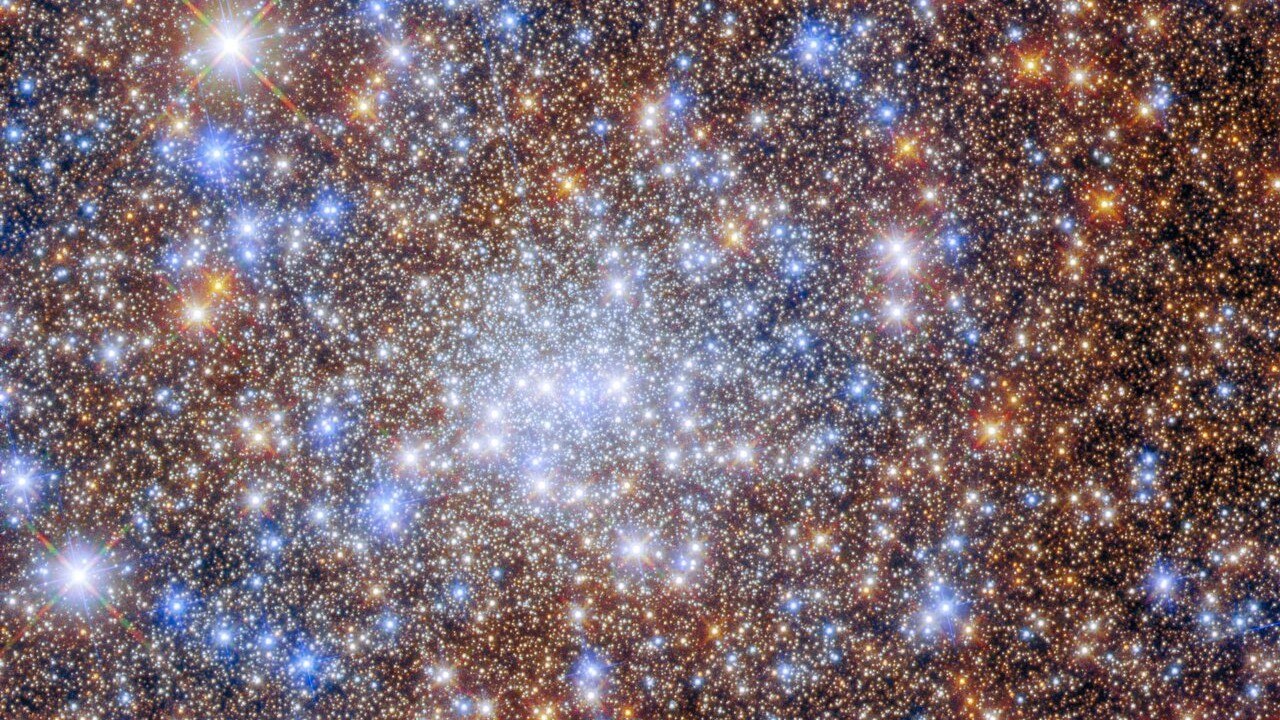Dazzling Hubble Space Telescope image shows millions of stars glittering like jewels

When the Hubble Space Telescope peered into an enormous star cluster called Terzan 4, it accessed a visual and scientific treasure trove.
NASA and the European Space Agency (ESA) often direct the iconic Hubble Space Telescope to look at corners of the universe that can't be rendered too well from Earth's surface, where our planet's atmosphere blocks out important nuances in the faraway light. But gargantuan assemblies of stars known as globular clusters, including Terzan 4, are perfect candidates for space telescope work.
Many well-studied globular clusters are found in the halo of the Milky Way — the hazy regions at the top and bottom of the celestial stream as seen from Earth. Some globular clusters, like Messier 55, are found in this halo, but Terzan 4 is not. Instead, it dwells in a part of our galaxy that's challenging for astronomers to study, making it a good target for Hubble's sensitive instruments.
Related: Hubble Space Telescope photo shows star-studded globular cluster near Milky Way's core
Globular clusters are spherical structures in which millions of stars are bound together by their gravity. The stars in these cosmic clumps are roughly the same age, yet their stars can be different colors. That shouldn't make sense at first glance, since a star's color can indicate its age.
In recent years, scientists have learned that so-called blue stragglers are likely two older stars that have crashed and formed a newer star. These collisions are inevitable. On average, each star in a globular cluster is separated from another by roughly 1 light-year, or one-fourth the distance between the sun and its nearest star, Proxima Centauri.
Intermediate-mass black holes — those with masses between 100 and 100,000 solar masses — might also dwell in globular clusters and even swing out into interstellar space from them, previous research has suggested.
Get the Space.com Newsletter
Breaking space news, the latest updates on rocket launches, skywatching events and more!
Globular clusters are gorgeous, but Terzan 4 is hard to see because it's located near the center of the Milky Way, where dust and gas around the galactic hearth present another obstacle to observations, known as extinction.
"Unlike globular clusters elsewhere in the sky, these globular clusters have evaded detailed observation because of the clouds of gas and dust swirling around the galactic core," ESA representatives wrote in an image description published Sept. 12.
However, Hubble was up for the challenge. "Astronomers took advantage of the sensitivity of two of Hubble's instruments — the Advanced Camera for Surveys and Wide Field Camera 3 — to overcome the impact of extinction on Terzan 4," ESA representatives wrote.
Hubble's "crystal-clear" vision will help reveal how these stellar cornucopias change over time.
Follow Doris Elin Urrutia on Twitter @salazar_elin. Follow us on Twitter @Spacedotcom and on Facebook.
Join our Space Forums to keep talking space on the latest missions, night sky and more! And if you have a news tip, correction or comment, let us know at: community@space.com.

Doris is a science journalist and Space.com contributor. She received a B.A. in Sociology and Communications at Fordham University in New York City. Her first work was published in collaboration with London Mining Network, where her love of science writing was born. Her passion for astronomy started as a kid when she helped her sister build a model solar system in the Bronx. She got her first shot at astronomy writing as a Space.com editorial intern and continues to write about all things cosmic for the website. Doris has also written about microscopic plant life for Scientific American’s website and about whale calls for their print magazine. She has also written about ancient humans for Inverse, with stories ranging from how to recreate Pompeii’s cuisine to how to map the Polynesian expansion through genomics. She currently shares her home with two rabbits. Follow her on twitter at @salazar_elin.









